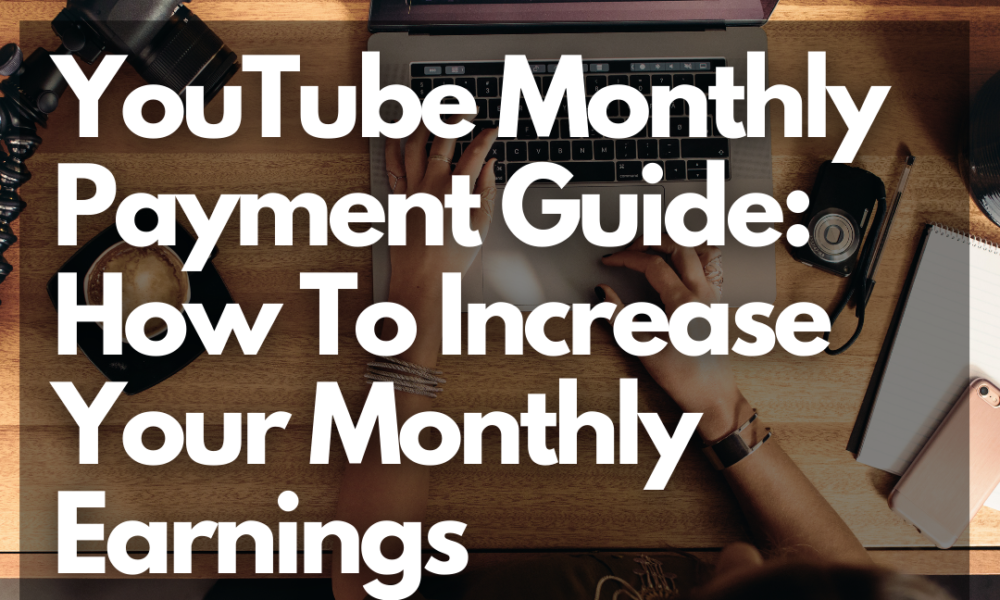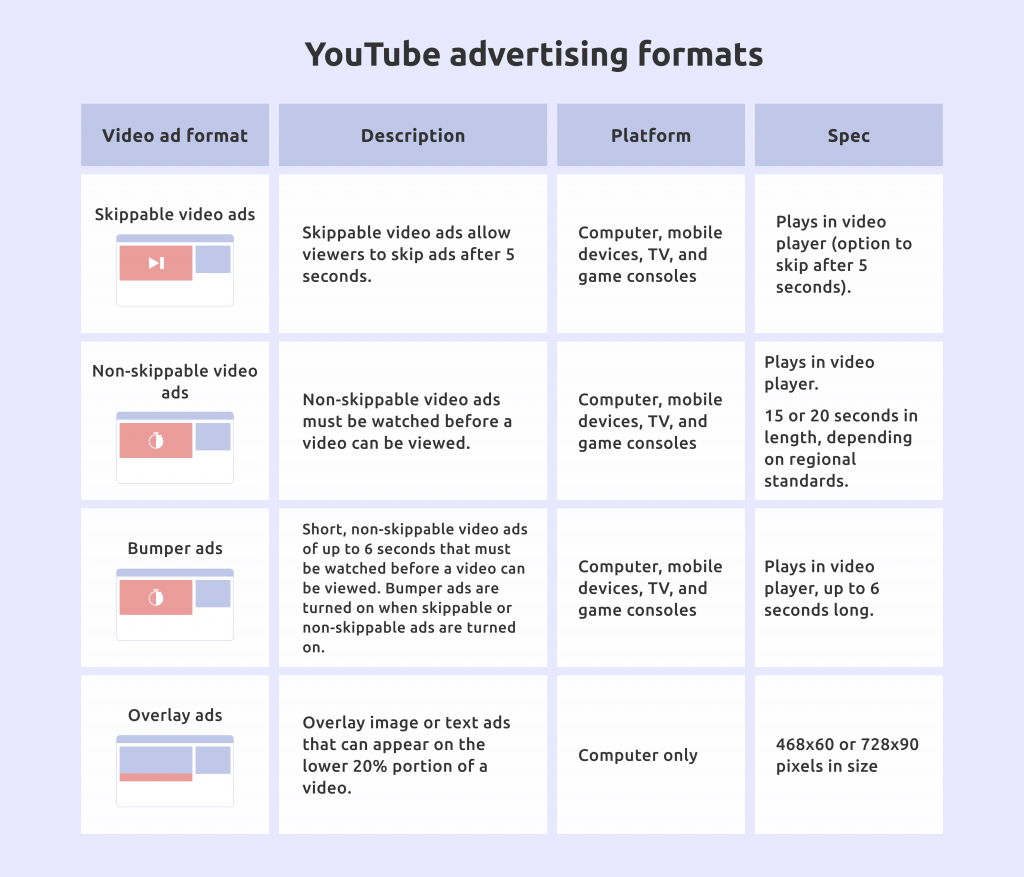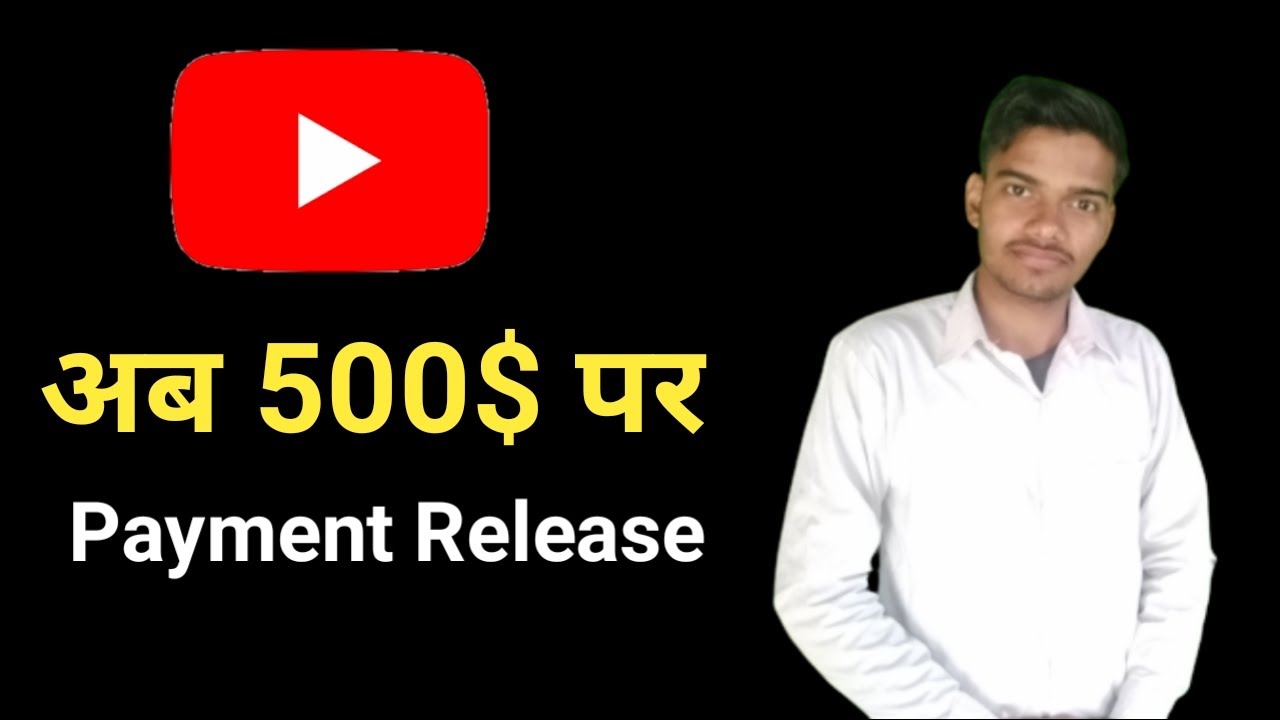YouTube monetization is a fascinating topic, especially if you're thinking about creating content or have already dipped your toes into the vast ocean of video-making. For those unfamiliar with the concept, monetization is essentially how creators earn money from their videos on the platform. In a nutshell, if you're bringing in views, there’s a good chance you can generate some income. This introduction will give you a brief overview of how the process works and what you need to know to start earning. So, let’s dive in!
How YouTube's Payment System Works

YouTube's payment system can be a bit complex, but let’s break it down into simpler parts. The primary method of monetization on the platform is through *AdSense, which allows creators to earn money from ads displayed on their videos. Here are some key points to understand:
- Eligibility: To monetize your videos, you need to be part of the YouTube Partner Program (YPP). This requires at least 1,000 subscribers and 4,000 watch hours in the past year.
- Advertisers: Advertisers pay YouTube to run their ads. The amount they pay can vary widely based on the type of ad and the target audience.
- Cost Per Mille (CPM): This is the amount advertisers pay per 1,000 ad impressions. CPM rates can fluctuate based on factors like time of year, audience demographics, and content niche.
- Payment Structure: YouTube pays creators 55% of the ad revenue, while YouTube retains 45%.
Payments are made monthly, typically around the 21st of each month, provided you’ve met the minimum threshold of $100 in your AdSense account. Here’s a simplified example of the process:
| Step | Description |
|---|---|
| 1 | Viewers watch your video, and ads are displayed. |
| 2 | Advertisers pay for those ad impressions. |
| 3 | YouTube collects the money and deducts their share. |
| 4 | They credit your AdSense account with 55% of the earnings. |
Understanding YouTube's payment system can empower you as a creator. By focusing on content that resonates with viewers, you can increase your reach and, ultimately, your income. Happy creating!
3. Factors Influencing Earnings on YouTube

When it comes to earning money on YouTube, several factors play a pivotal role in determining how much a creator can actually pocket from their videos. It's not just a case of hitting that 'upload' button and watching the dollars roll in!
- View Count: The number of views a video receives directly influences earnings. More views typically mean more ad impressions, which can lead to higher revenue.
- Audience Demographics: Who's watching your videos matters. Advertisers often pay more to target specific demographics, such as age and location. For example, viewers from countries like the USA or Canada often attract higher ad rates compared to viewers from other regions.
- Niche or Industry: Different niches have different CPM (cost per mille, or cost per thousand views) rates. Financial topics might fetch higher CPMs than, say, lifestyle or entertainment videos, because advertisers are willing to pay more to reach specific audiences.
- Engagement Metrics: Metrics like likes, comments, shares, and watch time play an essential role. More engagement means your video is likely being promoted more heavily, increasing views and, hence, earnings.
- Ad Formats: The type of ads displayed also influences revenue. Skippable vs. non-skippable ads, display ads, or sponsored content can all vary in payout.
So, while you might be tempted to think that a quick viral hit will set you up for life, the reality is that understanding these factors can help creators make informed decisions about content and strategy moving forward.
4. Monetization Options Available to Creators

For creators looking to make money on YouTube, there are several monetization options available. Each of these avenues can provide different revenue streams, enabling creators to diversify and maximize their earnings.
- Ad Revenue: This is the most common way YouTubers earn money. Once you become eligible for the YouTube Partner Program (YPP), you can earn money from ads displayed on your videos.
- Memberships: With channel memberships, creators can offer exclusive perks to subscribers who pay a monthly fee. It's a great way to build a loyal community while bringing in steady income.
- Super Chat and Super Stickers: During live streams, fans can pay to have their messages highlighted. This not only increases engagement but can also lead to significant earnings during popular broadcasts.
- Sponsorships: Many creators partner with brands to promote products or services. This can be highly lucrative, especially if the brand aligns with the creator's audience.
- Affiliate Marketing: By promoting products and including affiliate links, creators can earn a commission on sales generated through their recommendations.
- Merchandise Selling: Many YouTubers create and sell their merchandise, which can range from clothing to custom items, tapping into their audience's enthusiasm.
In essence, the key to successful monetization on YouTube is to explore multiple avenues and find what aligns best with your brand and audience to create a sustainable income stream.
5. Understanding CPM and RPM

When diving into the world of YouTube monetization, you’ll often come across two key terms: CPM (Cost Per Mille) and RPM (Revenue Per Mille). But what do these terms actually mean?
CPM refers to the cost advertisers are willing to pay for 1,000 ad impressions on your video. For instance, if an advertiser has a CPM of $5, they’re willing to pay you $5 for every 1,000 times ads are shown on your video. This can vary greatly depending on factors like your content type, audience demographics, and the time of year, especially during holidays when advertising budgets are higher.
On the other hand, RPM indicates the revenue you earn per 1,000 views across all your content, including views that might not have ads. Essentially, RPM gives you a clearer picture of what's going into your pocket after YouTube takes its cut. The formula for calculating RPM is:
RPM = (Estimated earnings / Total views) x 1,000
Here’s a quick table to summarize:
| Term | Definition |
|---|---|
| CPM | Cost that advertisers pay for 1,000 ad impressions. |
| RPM | Your earnings per 1,000 views, including all revenue sources. |
In summary, understanding CPM and RPM helps creators gauge their earnings potential and strategize content to attract high-paying advertisements!
6. Will YouTube Pay Monthly for Repeated Views?
This is a common question asked by many aspiring YouTubers. The short answer is yes; YouTube does pay for repeated views—under certain conditions. But let’s break it down a bit.
When a viewer watches your video multiple times, each view can contribute to your overall earnings, assuming ads are shown during those views. However, it’s essential to note a couple of things:
- Ad Impression Limits: YouTube has policies about how many ads can be shown to a single viewer in a given time period, which can affect earnings.
- Ad Spending Fluctuations: As CPM can vary, your earnings may not be consistent each month, even if views increase.
- Viewer Engagement:* If repeated views come from engaged viewers, it can lead to higher RPM as they are more likely to watch ads all the way through.
If your video becomes popular and viewers keep coming back for it, you could see those earnings add up over time. The more valuable content you produce, the more likely you are to encourage repeated views, which in turn can boost your monthly payments!
Just remember, while repeated views can enhance your earnings, the overall payment is influenced by numerous factors, including viewer engagement, ad performance, and changes in CPM rates. So, keep those videos coming!
7. Maximizing Earnings from Your YouTube Videos
When it comes to earning money on YouTube, there’s no one-size-fits-all strategy. But there are definitely some tactics you can employ to maximize your earnings from each video. Let’s dive into a few effective methods:
1. Optimize for Ad Revenue: Make sure you’re enabling all available ad formats. This includes skippable ads, non-skippable ads, bumper ads, and overlay ads. Each format has its own payout potential, and using a mix can cater to different viewer preferences.
2. Focus on Engagement: The more engaged your viewers are, the longer they’ll watch your videos. A high watch time can attract more advertisers. Ask questions, encourage comments, and create calls-to-action in your videos to foster engagement.
3. Create Evergreen Content: Videos that remain relevant over time can consistently generate views. Tutorials, how-tos, and informative content generally fall into this category. They can provide ongoing revenue long after initial release.
4. Promote Merchandise or Services: If you have your own merchandise or a service to offer, strategically promote it within your videos. Including links to your store in the video description can help convert viewers into buyers, thereby increasing your overall revenue.
5. Collaborate with Other Creators: Teaming up with other YouTubers can expose your content to new audiences. Cross-promotions can help expand your reach and bring in subscribers who might be interested in your videos.
Remember, maximizing your earnings is a continuous learning process. Keep experimenting and analyzing what works best for your channel!
8. Conclusion: Navigating YouTube Monetization
Navigating YouTube monetization can feel like a complex web, but it offers exciting opportunities for content creators to turn their passion into profit. Understanding the various revenue streams available is crucial. Let’s wrap things up by summarizing key points:
- Ad Revenue: The backbone of monetization for many creators, but it’s only effective when you can attract and maintain viewers.
- Memberships and Super Chat: Additional revenue streams that capitalize on your community's loyalty.
- Sponsorships and Brand Deals: Collaborating with brands can provide substantial income, especially if you have a niche audience.
- Affiliate Marketing: Promoting products through affiliate links can lead to commission sales without needing to maintain inventory.
It’s also important to stay updated on YouTube’s policies and algorithms, as these can change frequently and impact your monetization efforts. Regularly reviewing your analytics can help you adapt and optimize your strategy, ensuring you’re on the path to earning the most from your content.
In conclusion, while the road to YouTube monetization may have its ups and downs, the potential rewards make it worthwhile. With the right strategies in hand, consistent efforts, and a bit of creativity, you can successfully navigate this digital landscape.










